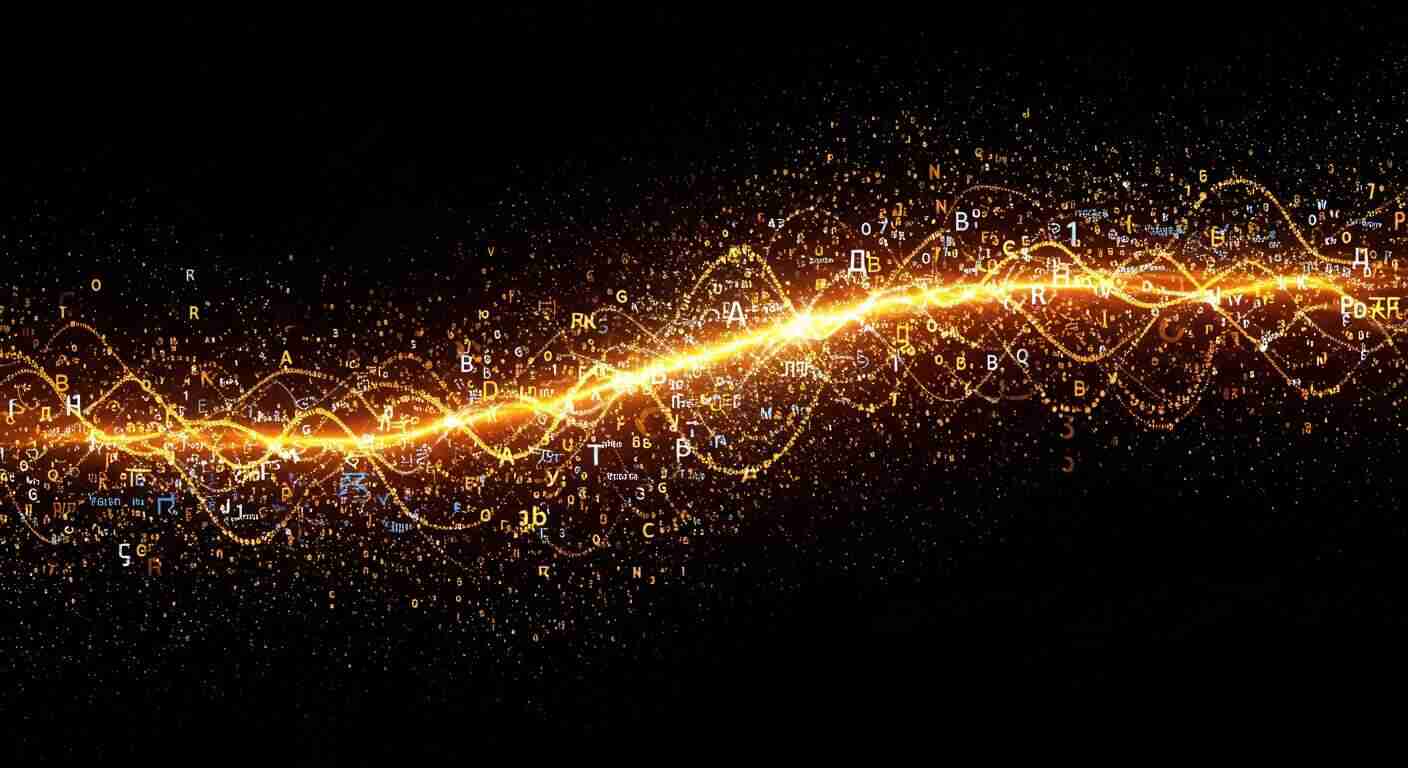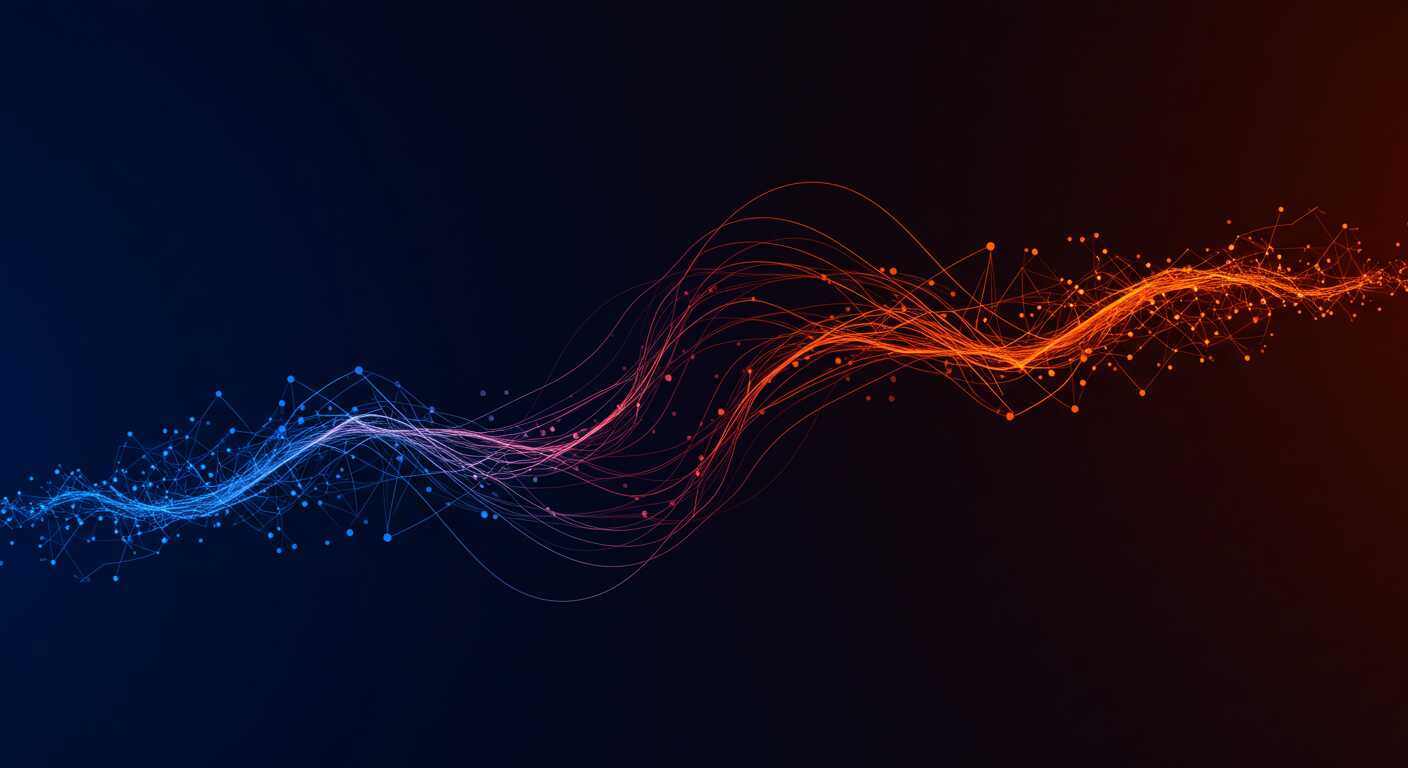はじめに
今回の大きなテーマは「CNNを用いた物体検出」です。CNNを用いた物体検出手法のうち、最も早く登場したR-CNNがありますが、今回では、その発展系とFast R-CNNを紹介していきます。
Fast R-CNN
Fast R-CNNは2015年に発表されたR-CNNより高速な物体検出手法です。Fast R-CNNはR-CNNのどのような点が改善されたのか見ていきましょう。
*R-CNN の仕組みを解説した記事もあります↓
アーキテクチャ
Fast R-CNNのR-CNNからの最も大きな変更点はアーキテクチャにあります。ここでR-CNNのアーキテクチャを振り返ってみましょう。R-CNNは以下の三つの部分で構成されています。
- Region Proposalの抽出
- CNNによる提案領域の特徴計算
- 提案領域の分類
まず一つ目がRegion Proposalの抽出です。ここでは、ニューラルネットワークではない外部のアルゴリズムを使用して画像内の物体が写っていそうな領域を抽出します。そして二つ目が、CNNによって提案領域の特徴を計算します。そして最後に、その特徴をもとに領域内のクラス分類を行います。

これに対してFast R-CNNのアーキテクチャは次にようになっています。
- 提案領域の抽出
- 画像全体の特徴マップの計算
- 提案領域に対応する特徴マップのプーリング(ROIプーリング)
- プーリングされた特徴に対するクラスの分類とバウンディングボックスのオフセットの回帰
まず、提案領域を抽出する部分はR-CNNと全く同じです。最も大きく異なるのが、次のCNNによる特徴計算の部分です。R-CNNでは、各提案領域ごとにCNNによって特徴を計算していました。これに対して、Fast R-CNNでは画像全体に対して一回だけ特徴を求める計算を行います。この変更によってFast R-CNNでは大幅に計算量を削減できました。
Pythonの疑似コードを見てみるとその差が一目瞭然です。
# R-CNNの場合
for 提案領域の画像パッチ in 一枚の画像:
特徴ベクトル = CNN(提案領域の画像パッチ)
予測クラス = FC層(特徴ベクトル)# Fast R-CNNの場合
特徴マップ = CNN(一枚の画像)
for 提案領域 in 画像の全ての提案領域:
特徴ベクトル = ROIプーリング(特徴マップ, 提案領域)
予測クラス, バウンディングボックスのオフセット = FC層(特徴ベクトル)R-CNNでは画像をCNNで計算するループが提案領域の数だけ回っているのがわかります。これに対して、Fast R-CNNではCNNに関する計算は一回だけです。この違いが速度に聞いてくるというわけです。

損失関数
R-CNNでは基本的には候補領域の物体のクラスを分類する損失関数のみが用いられており、さらに検出結果を改善するためには、バウンディングボックスのオフセット(真のバウンディングボックスとのずれ)を予測する後段のタスクを解くことを行う必要がありました。つまり、分類とバウンディングボックスの予測を二つのステージに分けて別々の損失関数で行う必要がありました。
これに対し、Fast R-CNNでは候補領域のクラス分類とバウンディングボックスのオフセットの予測を同時に行います。つまり、マルチタスク損失として一つの損失関数のみで学習を行なっていきます。Fast R-CNNでは以下のように損失関数を定義しています。
\( L(p, u, t^u, v) = L_{cls}(p, u) + λ[u ≥ 1]L_{loc}(t^u, v) \)ここで\( L(p, u, t^u, v) \)はマルチタスク損失全体を表しており、\( p = (p_0, . . . , p_K) \)は物体のクラスを表しています。そして、\( u \)は目的のRoIの正解クラスを表しています。\( t^u \)は正解クラスの正解オフセットを、\( v \)は予測したオフセットを表しています。クラス分類の関する損失である\( L_{cls} \)とバウンディングボックスのオフセットに関する損失の\( L_{loc} \)を係数\( \lambda \)によってバランスをとることでマルチタスク損失としています。
それでは、まずはクラス分類に関する損失である\( L_{cls} \)から中身を見ていきましょう。
\( L_{cls}(p, u) = − \log p^u \)これは正解クラスの確率が1より小さいほど大きくなるような関数です。したがって、クラス分類の損失関数として機能するのが確認できます。
次に、バウンディングボックスのオフセットに関する損失である\( L_{loc} \)を見ていきます。
\( L_{loc}(t^u,v)=\sum_{i∈{x,y,w,h}} smoothL1(t^u_i−v_i) \)ここで、smooth L1は次のように定義されます。
\( smoothL1(x)=\left\{\begin{array}{ll} 0.5x^2\quad\quad\text{if}|x|<1\\|x|−0.5\quad\text{otherwise}\end{array}\right. \)[/mathjax]Smooth L1 Lossは、ディープラーニングにおいて主に物体検出や回帰問題において用いられる誤差関数の一つです。二つの値の差の絶対値を用いる通常のL1 Lossに比べ、値の差が小さい場合には損失をより滑らかに計算することができます。Smooth L1 Lossは、値の差が小さい場合にはL2 Lossに近い挙動を示し、値の差が大きい場合にはL1 Lossに近い挙動を示します。そのため、モデルの学習がより安定することが期待されています。
Fast R-CNNの実装
データセットの準備
まずはモデルの学習に使用するデータセットを作成します。今回使用するのはR-CNNの時と同様にPSCAL VOC 2007というデータセットを使用します。なので、まずはPASCASL VOC 2007をダウンロードしてきてください。PASCSL VOCでは画像に対して、その真のバウンディングボックスとそのクラスがxml形式で与えられています。今回はR-CNNの時と同様に、車のクラスのみに対してモデルを訓練します。なので、まずはPASCAL VOCから車のみが写っている画像を抽出します。以下のコードがPASCAL VOCから車の画像のみを抽出するコードです。
import os
import shutil
import random
import numpy as np
def check_dir(data_dir):
if not os.path.exists(data_dir):
os.mkdir(data_dir)
suffix_xml = ".xml"
suffix_jpeg = ".jpg"
car_train_path = "./data/VOCdevkit/VOC2007/ImageSets/Main/car_train.txt"
car_val_path = "./data/VOCdevkit/VOC2007/ImageSets/Main/car_val.txt"
voc_annotation_dir = "./data/VOCdevkit/VOC2007/Annotations/"
voc_jpeg_dir = "./data/VOCdevkit/VOC2007/JPEGImages/"
car_root_dir = "./data/voc_car/"
def parse_train_val(data_path):
"""
指定したカテゴリの画像を抽出する
"""
samples = []
with open(data_path, "r") as file:
lines = file.readlines()
for line in lines:
res = line.strip().split(" ")
if len(res) == 3 and int(res[2]) == 1:
samples.append(res[0])
return np.array(samples)
def sample_train_val(samples):
"""
ランダムに1/10のデータを抽出
"""
for name in ["train", "val"]:
dataset = samples[name]
length = len(dataset)
random_samples = random.sample(range(length), int(length / 10))
# print(random_samples)
new_dataset = dataset[random_samples]
samples[name] = new_dataset
return samples
def save_car(car_samples, data_root_dir, data_annotation_dir, data_jpeg_dir):
"""
目的のディレクトリに保存する
"""
for sample_name in car_samples:
src_annotation_path = os.path.join(voc_annotation_dir, sample_name + suffix_xml)
dst_annotation_path = os.path.join(
data_annotation_dir, sample_name + suffix_xml
)
shutil.copyfile(src_annotation_path, dst_annotation_path)
src_jpeg_path = os.path.join(voc_jpeg_dir, sample_name + suffix_jpeg)
dst_jpeg_path = os.path.join(data_jpeg_dir, sample_name + suffix_jpeg)
shutil.copyfile(src_jpeg_path, dst_jpeg_path)
csv_path = os.path.join(data_root_dir, "car.csv")
np.savetxt(csv_path, np.array(car_samples), fmt="%s")
if __name__ == "__main__":
samples = {
"train": parse_train_val(car_train_path),
"val": parse_train_val(car_val_path),
}
print(samples)
# samples = sample_train_val(samples)
# print(samples)
check_dir(car_root_dir)
for name in ["train", "val"]:
data_root_dir = os.path.join(car_root_dir, name)
data_annotation_dir = os.path.join(data_root_dir, "Annotations")
data_jpeg_dir = os.path.join(data_root_dir, "JPEGImages")
check_dir(data_root_dir)
check_dir(data_annotation_dir)
check_dir(data_jpeg_dir)
save_car(samples[name], data_root_dir, data_annotation_dir, data_jpeg_dir)
print("done")
次に、あらかじめデータセットないの各画像に対してSelective Searchを用いて領域提案を行い、候補領域を保存しておきます。以下のコードは車だけのデータセットに対してSelective Searchを行い、候補領域と、その領域に対するラベルをアノテーションするコードです。この時、候補領域のバウンディングボックスと真のバウンディングボックスとのIoUを計算し、ある閾値以上の候補領域を正(車のクラスラベルを付与する)、それ以下の候補領域を負(背景クラスのラベルを付与する)のバウンディングボックスとしています。IoUに関してはR-CNNの記事(リンク埋め込む)に詳しい説明がございますので、ぜひ参考にしてみてください。
import time
import shutil
import numpy as np
import cv2
import os
import sys
import xmltodict
import torch
import matplotlib.pyplot as plt
# train
# positive num: 66517
# negatie num: 464340
# val
# positive num: 64712
# negative num: 415134
def check_dir(data_dir):
if not os.path.exists(data_dir):
os.mkdir(data_dir)
def parse_car_csv(csv_dir):
csv_path = os.path.join(csv_dir, "car.csv")
samples = np.loadtxt(csv_path, dtype="unicode")
return samples
def parse_xml(xml_path):
"""
アノテーションのバウンディングボックスの座標を返すためにxmlファイルをパースする
"""
with open(xml_path, "rb") as f:
xml_dict = xmltodict.parse(f)
bndboxs = list()
objects = xml_dict["annotation"]["object"]
if isinstance(objects, list):
for obj in objects:
obj_name = obj["name"]
difficult = int(obj["difficult"])
if "car".__eq__(obj_name) and difficult != 1:
bndbox = obj["bndbox"]
bndboxs.append(
(
int(bndbox["xmin"]),
int(bndbox["ymin"]),
int(bndbox["xmax"]),
int(bndbox["ymax"]),
)
)
elif isinstance(objects, dict):
obj_name = objects["name"]
difficult = int(objects["difficult"])
if "car".__eq__(obj_name) and difficult != 1:
bndbox = objects["bndbox"]
bndboxs.append(
(
int(bndbox["xmin"]),
int(bndbox["ymin"]),
int(bndbox["xmax"]),
int(bndbox["ymax"]),
)
)
else:
pass
return np.array(bndboxs)
def iou(pred_box, target_box):
"""
候補となる提案とラベル付きバウンディングボックスのIoUを計算する
:param pred_box: size [4].
:param target_box: size [N, 4] :return: [N].
:return: [N]
"""
if len(target_box.shape) == 1:
target_box = target_box[np.newaxis, :]
xA = np.maximum(pred_box[0], target_box[:, 0])
yA = np.maximum(pred_box[1], target_box[:, 1])
xB = np.minimum(pred_box[2], target_box[:, 2])
yB = np.minimum(pred_box[3], target_box[:, 3])
intersection = np.maximum(0.0, xB - xA) * np.maximum(0.0, yB - yA)
boxAArea = (pred_box[2] - pred_box[0]) * (pred_box[3] - pred_box[1])
boxBArea = (target_box[:, 2] - target_box[:, 0]) * (
target_box[:, 3] - target_box[:, 1]
)
scores = intersection / (boxAArea + boxBArea - intersection)
return scores
def compute_ious(rects, bndboxs):
iou_list = list()
for rect in rects:
scores = iou(rect, bndboxs)
iou_list.append(max(scores))
return iou_list
def save_model(model, model_save_path):
check_dir("./models")
torch.save(model.state_dict(), model_save_path)
def plot_loss(loss_list):
x = list(range(len(loss_list)))
fg = plt.figure()
plt.plot(x, loss_list)
plt.title("loss")
plt.savefig("./loss.png")
def get_selective_search():
gs = cv2.ximgproc.segmentation.createSelectiveSearchSegmentation()
return gs
def config(gs, img, strategy="q"):
gs.setBaseImage(img)
if strategy == "s":
gs.switchToSingleStrategy()
elif strategy == "f":
gs.switchToSelectiveSearchFast()
elif strategy == "q":
gs.switchToSelectiveSearchQuality()
else:
print(__doc__)
sys.exit(1)
def get_rects(gs):
rects = gs.process()
rects[:, 2] += rects[:, 0]
rects[:, 3] += rects[:, 1]
return rects
def parse_annotation_jpeg(annotation_path, jpeg_path, gs):
"""
正と負のサンプルを取得する(注:属性difficultがTrueのラベル付きバウンディングボックスは無視する)
正のサンプル:候補とラベル付きバウンディングボックスの間のIoUが0.5以上のもの
負のサンプル:IoUが0以上0.5未満。さらに負のサンプルの数を制限するために、サイズはラベルボックスの1/5より大きくなければなりません。
"""
img = cv2.imread(jpeg_path)
config(gs, img, strategy="q")
# 候補領域の算出
rects = get_rects(gs)
# ラベルのバウンディングボックスを取得する
bndboxs = parse_xml(annotation_path)
# ラベルのバウンディングボックスの最大サイズを取得する
maximum_bndbox_size = 0
for bndbox in bndboxs:
xmin, ymin, xmax, ymax = bndbox
bndbox_size = (ymax - ymin) * (xmax - xmin)
if bndbox_size > maximum_bndbox_size:
maximum_bndbox_size = bndbox_size
# 候補の提案とラベル付きバウンディングボックスのIoUを取得する
iou_list = compute_ious(rects, bndboxs)
positive_list = list()
negative_list = list()
for i in range(len(iou_list)):
xmin, ymin, xmax, ymax = rects[i]
rect_size = (ymax - ymin) * (xmax - xmin)
iou_score = iou_list[i]
if iou_list[i] >= 0.5:
positive_list.append(rects[i])
if 0 < iou_list[i] < 0.5 and rect_size > maximum_bndbox_size / 5.0:
negative_list.append(rects[i])
else:
pass
return positive_list, negative_list
if __name__ == "__main__":
car_root_dir = "./data/voc_car/"
finetune_root_dir = "./data/finetune_car/"
check_dir(finetune_root_dir)
gs = get_selective_search()
for name in ["train", "val"]:
src_root_dir = os.path.join(car_root_dir, name)
src_annotation_dir = os.path.join(src_root_dir, "Annotations")
src_jpeg_dir = os.path.join(src_root_dir, "JPEGImages")
dst_root_dir = os.path.join(finetune_root_dir, name)
dst_annotation_dir = os.path.join(dst_root_dir, "Annotations")
dst_jpeg_dir = os.path.join(dst_root_dir, "JPEGImages")
check_dir(dst_root_dir)
check_dir(dst_annotation_dir)
check_dir(dst_jpeg_dir)
total_num_positive = 0
total_num_negative = 0
samples = parse_car_csv(src_root_dir)
src_csv_path = os.path.join(src_root_dir, "car.csv")
dst_csv_path = os.path.join(dst_root_dir, "car.csv")
shutil.copyfile(src_csv_path, dst_csv_path)
for sample_name in samples:
since = time.time()
src_annotation_path = os.path.join(src_annotation_dir, sample_name + ".xml")
src_jpeg_path = os.path.join(src_jpeg_dir, sample_name + ".jpg")
positive_list, negative_list = parse_annotation_jpeg(
src_annotation_path, src_jpeg_path, gs
)
total_num_positive += len(positive_list)
total_num_negative += len(negative_list)
dst_annotation_positive_path = os.path.join(
dst_annotation_dir, sample_name + "_1" + ".csv"
)
dst_annotation_negative_path = os.path.join(
dst_annotation_dir, sample_name + "_0" + ".csv"
)
dst_jpeg_path = os.path.join(dst_jpeg_dir, sample_name + ".jpg")
shutil.copyfile(src_jpeg_path, dst_jpeg_path)
np.savetxt(
dst_annotation_positive_path,
np.array(positive_list),
fmt="%d",
delimiter=" ",
)
np.savetxt(
dst_annotation_negative_path,
np.array(negative_list),
fmt="%d",
delimiter=" ",
)
time_elapsed = time.time() - since
print(
"parse {}.png in {:.0f}m {:.0f}s".format(
sample_name, time_elapsed // 60, time_elapsed % 60
)
)
print("%s positive num: %d" % (name, total_num_positive))
print("%s negative num: %d" % (name, total_num_negative))
print("done")
以上で学習で使用するデータセットの準備は完了です。
データセットクラスの作成
次は、PyTorchを用いてモデルを学習するための自作データセットクラスを作成します。PyTorchでは一般的にDatasetクラスとDataloaderクラスをセットで使用することで学習中にミニバッチを取り出します。Fast R-CNNでは画像1枚に対して64個の候補領域をモデルに渡します。論文では一つのミニバッチの画像枚数が2枚となっているため、今回も一つのミニバッチには画像2枚と128個の候補領域が含まれるようにDatasetクラスを書いていきます。なお、論文中では64個の候補領域のうち、背景と物体の割合が4:1になるようにミニバッチを作っていますが、今回のクラス数が極端に少ない場合では背景にか学習を起こしてしまったため、背景と物体の割合を1:1にしています。以下が自作Datasetクラスのコードです。PyTorchのDatasetクラスの詳しい説明については割愛しますが、興味がある方は公式のドキュメントhttps://pytorch.org/tutorials/beginner/basics/data_tutorial.htmlを参考にしてみてください。
import random
import cv2
import os
import numpy as np
from torch.utils.data import Dataset
import torchvision.transforms as transforms
def iou(pred_box, target_box):
"""
候補となる提案とラベル付きバウンディングボックスのIoUを計算する
:param pred_box: size [4].
:param target_box: size [N, 4] :return: [N].
:return: [N]
"""
if len(target_box.shape) == 1:
target_box = target_box[np.newaxis, :]
xA = np.maximum(pred_box[0], target_box[:, 0])
yA = np.maximum(pred_box[1], target_box[:, 1])
xB = np.minimum(pred_box[2], target_box[:, 2])
yB = np.minimum(pred_box[3], target_box[:, 3])
intersection = np.maximum(0.0, xB - xA) * np.maximum(0.0, yB - yA)
boxAArea = (pred_box[2] - pred_box[0]) * (pred_box[3] - pred_box[1])
boxBArea = (target_box[:, 2] - target_box[:, 0]) * (
target_box[:, 3] - target_box[:, 1]
)
scores = intersection / (boxAArea + boxBArea - intersection)
return scores
def parse_car_csv(csv_dir):
csv_path = os.path.join(csv_dir, "car.csv")
samples = np.loadtxt(csv_path, dtype="unicode")
return samples
class CustomFinetuneDataset(Dataset):
def __init__(self, root_dir, transform):
"""
positive_anotations: [x_min, y_min, x_max, y_max, t_x, t_y, t_w, t_h]
最初の4つは正規化された提案領域の座標。次の正解とのオフセット
negative_annotations: [x_min, y_min, x_max, y_max]
"""
self.transform = transform
samples = parse_car_csv(root_dir)
jpeg_images = list()
annotation_dict = dict()
for idx in range(len(samples)):
sample_name = samples[idx]
img = cv2.imread(os.path.join(root_dir, "JPEGImages", sample_name + ".jpg"))
h, w = img.shape[:2]
jpeg_images.append(img)
bndbox_path = os.path.join(root_dir, "bndboxs", sample_name + ".csv")
bndboxes = np.loadtxt(bndbox_path, dtype="float32", delimiter=" ")
positive_annotation_path = os.path.join(
root_dir, "Annotations", sample_name + "_1.csv"
)
positive_annotations = np.loadtxt(
positive_annotation_path, dtype="float32", delimiter=" "
)
offsets = list()
if len(positive_annotations.shape) == 1:
positive_annotations = positive_annotations[np.newaxis, :]
gt_bbox = self.get_bndbox(bndboxes, positive_annotations[0])
# オフセットを計算する
x_min, y_min, x_max, y_max = positive_annotations[0][:4]
p_w = x_max - x_min
p_h = y_max - y_min
p_x = x_min + p_w / 2
p_y = y_min + p_h / 2
x_min, y_min, x_max, y_max = gt_bbox
g_w = x_max - x_min
g_h = y_max - y_min
g_x = x_min + g_w / 2
g_y = y_min + g_h / 2
t_x = (g_x - p_x) / p_w
t_y = (g_y - p_y) / p_h
t_w = np.log(g_w / p_w)
t_h = np.log(g_h / p_h)
positive_annotations[0][0] /= w
positive_annotations[0][1] /= h
positive_annotations[0][2] /= w
positive_annotations[0][3] /= h
offsets.append(np.array([t_x, t_y, t_w, t_h]))
else:
for i in range(len(positive_annotations)):
gt_bbox = self.get_bndbox(bndboxes, positive_annotations[i])
# オフセットを計算する
x_min, y_min, x_max, y_max = positive_annotations[i][:4]
p_w = x_max - x_min
p_h = y_max - y_min
p_x = x_min + p_w / 2
p_y = y_min + p_h / 2
x_min, y_min, x_max, y_max = gt_bbox
g_w = x_max - x_min
g_h = y_max - y_min
g_x = x_min + g_w / 2
g_y = y_min + g_h / 2
t_x = (g_x - p_x) / p_w
t_y = (g_y - p_y) / p_h
t_w = np.log(g_w / p_w)
t_h = np.log(g_h / p_h)
positive_annotations[i][0] /= w
positive_annotations[i][1] /= h
positive_annotations[i][2] /= w
positive_annotations[i][3] /= h
offsets.append(np.array([t_x, t_y, t_w, t_h]))
negative_annotation_path = os.path.join(
root_dir, "Annotations", sample_name + "_0.csv"
)
negative_annotations = np.loadtxt(
negative_annotation_path, dtype="float32", delimiter=" "
)
negative_annotations[:, 0] /= w
negative_annotations[:, 1] /= h
negative_annotations[:, 2] /= w
negative_annotations[:, 3] /= h
# positive_annotationsとoffsetsを結合
offsets = np.array(offsets).reshape(-1, 4)
positive_annotations = np.concatenate(
(positive_annotations, offsets), axis=1
)
annotation_dict[str(idx)] = {
"positive": positive_annotations,
"negative": negative_annotations,
}
self.jpeg_images = jpeg_images
self.annotation_dict = annotation_dict
def __getitem__(self, index: int):
"""
positiveな領域に関してはboxの座標とオフセットを返す
negativeな領域に関してはboxの座標のみを返す
:param index:
:return:
"""
assert index < len(self.jpeg_images), "現在のデータセットの合計数: %d、入力インデックス: %d" % (
len(self.jpeg_images),
index,
)
image = self.jpeg_images[index]
annotation_dict = self.annotation_dict[str(index)]
positive_annotations = annotation_dict["positive"]
negative_annotations = annotation_dict["negative"]
positive_num = 32
negative_num = 32
if len(positive_annotations) < positive_num:
positive_num = len(positive_annotations)
negative_num = 64 - positive_num
positive_array = positive_annotations
else:
positive_array = positive_annotations[
random.sample(range(positive_annotations.shape[0]), positive_num)
]
positive_bbox = positive_array[:, :4]
# zero array [negative_num, 4]. this is dummy data
negative_offset = np.zeros((negative_num, 4))
offset = positive_array[:, 4:]
# concat negative offset and offset
offset = np.concatenate((offset, negative_offset), axis=0)
negative_array = negative_annotations[
random.sample(range(negative_annotations.shape[0]), negative_num)
]
# rect_array = np.vstack((positive_array, negative_array))
rect_array = np.vstack((positive_bbox, negative_array))
# targets = np.hstack((np.ones(positive_num), np.zeros(negative_num)))
# make one-hot vector
targets = np.zeros((positive_num + negative_num, 2))
targets[:positive_num, 0] = 1
targets[positive_num:, 1] = 1
if self.transform:
image = self.transform(image)
return image, targets, rect_array, offset
def __len__(self) -> int:
return len(self.jpeg_images)
def get_bndbox(self, bndboxes, positive):
"""
入力されたpositiveなboxに対して、最もIoUが高いgt boxを返す
:param bndboxes: [n, 4]
:param positive: [4]
:return: [4]
"""
if len(bndboxes.shape) == 1:
return bndboxes
else:
scores = iou(positive, bndboxes)
return bndboxes[np.argmax(scores)]損失関数
損失関数はPyTorchで用意されている損失関数を組み合わせることで実装しています。以下のコードがマルチタスク損失の実装です。ここで論文とクラス分類の損失の部分が異なりますが、実装の簡略化のためクロスエントロピー損失を用いています。
import torch.nn as nn
class MultiTaskLoss(nn.Module):
def __init__(self, lam=1):
super(MultiTaskLoss, self).__init__()
self.lam = lam
self.cls = nn.CrossEntropyLoss(reduction="mean")
self.loc = nn.SmoothL1Loss(reduction="mean")
def forward(self, scores, preds, targets, targets_loc):
"""
:param scores: softmax関数を通過した後の分類結果 [batch size * roi num, class num]
:param preds: 予測されたbboxのオフセット [batch size * roi num, 4]
:param targets: 正解クラスのラベル [batch size * roi num, class num]
:param targets_loc: 正解bboxのオフセット [batch size * roi num, 4]
"""
cls_loss = self.cls(scores, targets)
loc_loss = self.loc(preds, targets_loc)
return cls_loss + self.lam * loc_lossネットワーク
下のコードはネットワーク部分の実装です。論文中ではCNNとしてVGG16というモデルを使用してますので、今回もVGG16を使用します。まず、PyTorchが用意してあるImageNetで事前学習済みVGG16をロードします。次に、あらかじめ用意した事前学習済みモデルがあるならば、それをロードします。今回は車のクラスのみを使用しますので、Fast R-CNNの学習時には、車の画像のみでfine-tuneしたVGG16モデルを使用します。そして、このVGG16をFast R-CNN仕様に変更していきます。まず、変更すべき所ははCNNの特徴マップを取り出す部分です。VGG16の特徴マップがmax-poolingされて7×7になる寸前の層までを特徴抽出器self.featuresとして使用します。そして、特徴抽出後のRoIプーリングはPyTorchで用意されている関数を使用します。詳しい使い方は公式ドキュメントを参照してくださいhttps://pytorch.org/vision/main/generated/torchvision.ops.roi_pool.html。RoIプーリングを行った後は、各RoIの7×7になった特徴を一つのベクトルにします。そして、二層の全結合層に通した後、分類結果とバウンディングボックスのオフセットを求めています。
import torch
import torch.nn as nn
import torchvision.models as models
from torchvision.ops import roi_pool
class VGG16_RoI(nn.Module):
def __init__(
self,
num_classes=1000,
device=torch.device("cuda:0"),
pretrained_model_path=None,
):
"""
:param num_classes: 类别数,不包括背景类别
:param init_weights:
"""
super(VGG16_RoI, self).__init__()
# load pretrained vgg16
model = models.vgg16(pretrained=True)
num_features = model.classifier[6].in_features
model.classifier[6] = nn.Linear(num_features, 2)
# load pretrained weight
if pretrained_model_path is not None:
model.load_state_dict(
torch.load(pretrained_model_path, map_location=device)
)
model.load_state_dict(
torch.load(
"/home/zaima/zero2one/models/vgg16_car_finetuned.pth",
map_location=device,
)
)
# 512 * 28 * 28の特徴マップを取り出す
self.features = nn.Sequential(*list(model.features.children())[:23])
self.classifier = nn.Sequential(
nn.Linear(512 * 7 * 7, 4096),
nn.ReLU(True),
nn.Dropout(),
nn.Linear(4096, 4096),
nn.ReLU(True),
nn.Dropout(),
)
self.softmax = nn.Sequential(
nn.Linear(4096, num_classes + 1),
nn.Softmax(dim=1),
)
self.bbox = nn.Sequential(
nn.Linear(4096, num_classes * 4),
nn.ReLU(True),
)
def forward(self, x, rois):
x = self.features(x)
rois = list(rois)
x = roi_pool(x, rois, (7, 7), spatial_scale=x.shape[2])
x = torch.flatten(x, 1)
x = self.classifier(x)
class_score = self.softmax(x)
bbox_regression = self.bbox(x)
return class_score, bbox_regressionFast R-CNNの学習
それでは実際にモデルを学習していきます。モデルの学習には時間がかかりますので、学習用のコードを記載するのみとします。おおまかに次のような流れで処理を行っています。
- データとモデルの準備
- オリジナルのDatasetクラスを使って学習データとテストデータを用意する。
- 作成したネットワークを準備。この際に事前学習済みモデルをロードする
- 学習部分
- Dataloaderから訓練データの、画像・RoIのクラス・RoI・正解のバウンディングボックスとのオフセットを取り出し、画像とRoIをモデルの渡す。
- モデルから返ってきたクラスとバウンディングボックスのオフセットと、正解のクラスとバウンディングボックスのオフセットを損失関数に通す。
- 最もvalidationデータでの精度が高いモデルを保存する
import os
import copy
import time
import torch
import torch.optim as optim
from torch.utils.data import DataLoader
import torchvision.transforms as transforms
# 今回は他のファイルに記述したネットワークとデータセットと損失関数などをロードしてきています
# 必要に応じてこれらのクラスや関数を配置してください
from models.vgg16_roi import VGG16_RoI
from models.multi_task_loss import MultiTaskLoss
from utils.data.custom_finetune_dataset import CustomFinetuneDataset
from utils.util import check_dir
def load_data(data_root_dir, batch_size=128):
transform = transforms.Compose(
[
transforms.ToPILImage(),
transforms.Resize((227, 227)),
transforms.RandomHorizontalFlip(),
transforms.ToTensor(),
transforms.Normalize((0.5, 0.5, 0.5), (0.5, 0.5, 0.5)),
]
)
data_loaders = {}
data_sizes = {}
for name in ["train", "val"]:
data_dir = os.path.join(data_root_dir, name)
data_set = CustomFinetuneDataset(data_dir, transform=transform)
data_loader = DataLoader(
dataset=data_set,
batch_size=batch_size,
shuffle=True,
num_workers=8,
drop_last=True,
)
data_loaders[name] = data_loader
data_sizes[name] = len(data_set)
return data_loaders, data_sizes
def train_model(
data_loaders, model, criterion, optimizer, lr_scheduler, num_epochs=25, device=None
):
since = time.time()
best_model_weights = copy.deepcopy(model.state_dict())
best_acc = 0.0
for epoch in range(num_epochs):
print("Epoch {}/{}".format(epoch, num_epochs - 1))
print("-" * 10)
# Each epoch has a training and validation phase
for phase in ["train", "val"]:
if phase == "train":
model.train() # Set model to training mode
else:
model.eval() # Set model to evaluate mode
running_loss = 0.0
running_corrects = 0
for input_img, target_cls, rois, target_offsets in data_loaders[phase]:
positive_num_per_batch = (
torch.sum(target_cls.reshape(-1, 2)[:, 0] == 1) / batch_size
).item()
positive_num_per_batch = int(positive_num_per_batch)
target_offsets = target_offsets[:, :positive_num_per_batch, :]
input_img = input_img.to(device)
target_cls = target_cls.to(device)
rois = rois.to(device).float()
target_offsets = target_offsets.to(device).float()
optimizer.zero_grad()
# forward
with torch.set_grad_enabled(phase == "train"):
outputs_cls, outputs_offsets = model(input_img, rois)
loss = criterion(
outputs_cls,
outputs_offsets.reshape(batch_size, -1, 4)[
:, :positive_num_per_batch, :
],
target_cls.reshape(-1, 2),
target_offsets,
)
if phase == "train":
loss.backward()
optimizer.step()
# statistics
running_loss += loss.item() * target_cls.size(0)
outputs_cls = torch.argmax(outputs_cls, dim=1)
running_corrects += torch.sum(
outputs_cls == torch.argmax(target_cls.reshape(-1, 2), dim=1)
)
if phase == "train":
lr_scheduler.step()
epoch_loss = running_loss / data_sizes[phase]
epoch_acc = running_corrects / data_sizes[phase]
print("{} Loss: {:.4f} Acc: {:.4f}".format(phase, epoch_loss, epoch_acc))
# deep copy the model
if phase == "val" and epoch_acc > best_acc:
best_acc = epoch_acc
best_model_weights = copy.deepcopy(model.state_dict())
print()
time_elapsed = time.time() - since
print(
"Training complete in {:.0f}m {:.0f}s".format(
time_elapsed // 60, time_elapsed % 60
)
)
print("Best val Acc: {:4f}".format(best_acc))
# load best model weights
model.load_state_dict(best_model_weights)
return model
if __name__ == "__main__":
device = torch.device("cuda:0" if torch.cuda.is_available() else "cpu")
# バッチサイズ(画像枚数)
batch_size = 2
# エポック数
num_epochs = 30
# バウンディングボックスの損失の重み
lam = 1
data_loaders, data_sizes = load_data("./data/finetune_car", batch_size)
model = VGG16_RoI(num_classes=1)
model = model.to(device)
print(model)
criterion = MultiTaskLoss(lam=lam)
optimizer = optim.SGD(model.parameters(), lr=1e-3, momentum=0.9)
lr_scheduler = optim.lr_scheduler.StepLR(optimizer, step_size=7, gamma=0.1)
best_model = train_model(
data_loaders,
model,
criterion,
optimizer,
lr_scheduler,
device=device,
num_epochs=num_epochs,
)
check_dir("./models")
torch.save(best_model.state_dict(), "./models/fast_rcnn.pth")
推論
それでは、学習済みのモデルを使用してFast R-CNNの推論をしてみます。R-CNNと比べると、推論速度が高速になっています。
さいごに
今回はCNNによる物体検出シリーズの第2弾としてFast R-CNNの解説と実装を行いました。実装部分は正確な論文の設定とは離れている部分もあるため、完全な論文の手法の再現というわけではないですが、Fast R-CNNの原理を実装レベルから理解するための手助けとなっていれば幸いです。















